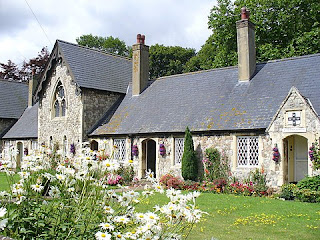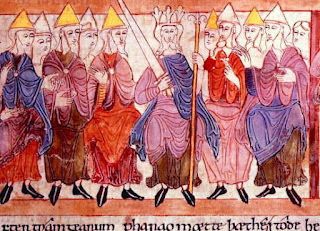Her mother was Wulfthryth, who was taken from the nunnery at Wilton Abbey by King Edgar the Peaceable, who initially wanted Wulfthryth's sister, Wulfhild. After bearing him a daughter, Wulfthryth decided to return to the nunnery, taking her daughter and leaving Edgar to find another wife (which he did in Ælfthryth).
There is a later story that, when Edith was two, her father came to Wilton and laid before her royal clothing and jewelry, while her mother presented her with religious objects. Edith supposedly reached for the religious objects, displaying her devotion to religion. This story is likely apocryphal, but Edith did, in fact, devote her life to religion. It is also said that, when she was 15, Edgar offered to make her an abbess and gave her a choice of three convents, but she chose to remain at Wilton for the rest of her life.
A saint's life written a century later by Goscelin of Canterbury suggests that Edgar was a supporter of his daughter, his former wife, and the Abbey. Goscelin describes her as wearing very grand clothing at the Abbey, annoying the other residents. Her choice of these royal garments was tested when a candle fell on the chest containing them; the chest burned, but the clothing inside was unharmed.
Edith may have remained a secular member of Wilton and not become a nun. She seems to have lived a grand life. Edgar sent her two foreign tutors, gave her clothing, financed the re-building of the convent with a chapel designed by Edith, and Edith occasionally visited her father's court. Edith also had a private zoo of exotic animals at the convent.
In 984, she built a chapel dedicated to the 3rd-century Saint Denis. The dedication ceremony was performed by St. Dunstan, who predicted that Edith would die in three weeks. She did. At the moment of her death, a nun at Wilton saw ranks of angels singing in the abbey church.
After her death, there were only a few miracles attributed to her, so the progress to canonize her was slow, but she was eventually named a saint by her brother King Æthelred II 13 years after her death.
Of course the stories, especially written long after her death and relying on legends told by the abbey, cannot be taken at face value. There was a great deal of politics to be found in acknowledging certain saints. Tomorrow I want to talk about Edith's sainthood and what it meant to the king.



















